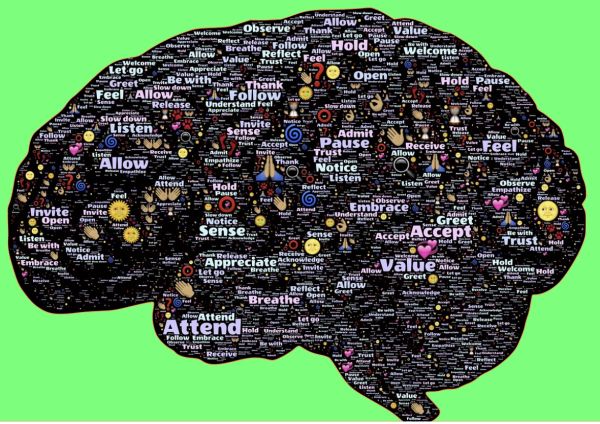
If you have chronic pain, meditation can help you manage it. Meditation can help you reduce stress and anxiety and improve your mental health. This 32-minute audio can show you how to meditate, and how to change your relationship towards pain. It can increase your tolerance for pain. But how do you get started? You can learn more about meditation for pain management by reading the following. It is up to you. Here are some suggestions to help you get started.
During meditation for pain management, patients learn how to react to pain. Patients are able to lessen their emotional reaction to pain through this process. They learn that the pain they feel is temporary and does NOT cause them to have a negative reaction. They are more capable of taking control of their own lives. It is common for pain to go undiagnosed, sometimes for years. Conventional medications will not give relief if the condition is not properly diagnosed. Meditation has been proven to be both anti-inflammatory, and anti-anxiety.

Meditation can not only help with pain management but it can also improve your quality of life. Your mind can be controlled to help you cope better with your condition. Regular meditation will help you change your attitude toward pain and life. A study has shown that meditation daily can increase your quality of life. You may be surprised at how much more positive you are when you're able to explore your feelings about pain and learn to live with it.
Meditation has many benefits beyond its physical benefits. It can also improve your mental well-being. Chronic pain can lead you to a vicious circle of constant pain that never ends. Meditating will help you improve your mental and physical resilience. Not only will it increase your tolerance of pain and discomfort but also strengthen your immune system. Meditation can also increase endorphin release which can help with pain management and mood improvement.
It can reduce your pain perception. Meditating can help reduce pain by calmening your nervous system. You'll feel less irritable and more open to suffering. There are many types of meditation you can do, such as mindfulness meditation, guided mediation for the purpose of pain, or sleep meditation. Meditation for chronic pain has many benefits, so it could be the best option to manage your condition.

Meditation can help with pain relief, but it also helps with the social and psychological aspects of the condition. It can help patients feel more relaxed and in control by reducing their anxiety. They can also use it to reduce their anxiety and help them manage their limits. This can help them live happier and healthier lives. It is important that you find a meditation that is right for you. Numerous online meditation guides are available at no cost.
FAQ
Why do we need to have a healthy lifestyle?
Having a healthy lifestyle helps us live longer, happier lives. Regular exercise, healthy eating habits, healthy sleep habits and stress management can all help prevent strokes, heart disease, diabetes, and cancer.
A healthy lifestyle helps us cope better when we are faced with everyday stresses. Healthy lifestyles will increase self confidence, and make us look and feel older.
What causes weight loss as we age?
How can you find out if your weight has changed?
Weight loss happens when there is less muscle mass and more fat. This means that you must consume more calories than you use daily. The most common cause of weight loss is decreased activity levels. Other reasons include poor eating habits, stress, hormone imbalances, certain medications and illness. Weight gain is when there are more calories than muscle mass. It happens when people eat more calories than they use during a given day. Common reasons include overeating, increased physical activity, and hormonal changes.
The main reason why our bodies lose weight is because we consume fewer calories than we burn. When we exercise regularly, we increase our metabolism rate which burns off more calories throughout the day. This doesn't necessarily mean we will lose weight. What matters is whether we are losing fat or building muscle. If we are burning more calories than what we eat, then we will lose weight. But if we're consuming more calories than we're burning, then we're actually storing them as fat.
As we age, we become less agile and don't move as often. We also tend have less food to eat than when our children were young. Therefore, we tend to put on weight. We also tend to look larger because we have more muscle.
There's no way to tell how much weight you've lost unless you weigh yourself every week. There are many ways you can measure your weight. You can also measure your waist, hips or thighs. Some prefer to use the bathroom scales, others prefer to use tape measures.
You can track your progress by weighing yourself at least once per week and measuring your waistline every month. You can also take pictures of yourself every few months to see how far you've come.
Online measurements of your height and weight can help you determine your body mass. If you're tall at 5'10", and weigh 180lbs, your weight would be 180.
What is the difference of fat and sugar?
Fat is an energy source from food. Sugar is a sweet, naturally occurring substance in fruits and vegetables. Both sugars and fats have the same calories. However, fats contain more than twice as many calories as sugars.
Fats are stored within the body and can contribute to obesity. They may cause cholesterol buildup and lead to strokes or heart attacks.
Sugars provide instant energy and are rapidly absorbed by the body. This causes blood glucose to rise. High blood glucose levels can pose a danger because they increase the chance of developing type II Diabetes.
What should I be eating?
Get lots of fruits & vegetables. These vegetables and fruits are rich in vitamins and minerals that will keep your immune system strong. Vegetables and fruits are high in fiber which helps to digest and fill you up. Try to include at least five servings of fruit and veg per day.
Get plenty of water. Water flushes toxins from the body and gives you a full feeling between meals. Drink about eight glasses each day.
Refined grains should be replaced with whole grains. Whole grains have all their nutrients intact, including B vitamins, iron, zinc, magnesium, calcium, and protein. Refined grain has lost some of its nutrition.
Avoid sugary drinks. Sugary drinks are loaded with empty calories and contribute to obesity. Instead, drink water, milk, or unsweetened Tea.
Avoid fast food. Fast food has very little nutritional value. It may taste great but it won't give you the energy you need to function properly. Choose healthier options like salads, soups and sandwiches as well as pasta dishes.
Try to limit alcohol intake. Alcohol contains empty calories and contributes to poor nutrition. Limit your consumption to no more than 2 alcoholic beverages per week
Red meat consumption should be reduced. Red meats contain high amounts of saturated fats and cholesterol. Opt for lean cuts of beef, pork, lamb, chicken, fish, and turkey instead.
How do I count calories?
You may be wondering "what is the best diet for you?" or "is counting calories necessary?" It depends on many factors such as your current health, personal goals, preferences, and overall lifestyle.
The Best Diet - Which One Is Right To You?
The best diet depends on me, my health, my goals, my preferences and my overall lifestyle. There are many diets out there, some good and some bad. Some work well for certain people while others don't. What should I do then? What can I do to make the right decision?
These are the questions this article will answer. It begins by briefly describing the various diets available today. The pros and cons of each diet are then discussed. We'll then discuss how to choose which one is best for you.
Let's begin by briefly reviewing the different types and diets.
Diet Types
There are three main types. Low fat, high proteins, and ketogenic. Let's discuss them briefly below.
Low Fat Diets
A low fat diet means a diet that reduces the intake of fats. This is achieved through reducing intakes of saturated fats (butter and cream cheese, for example). They are replaced by unsaturated fats such as avocados, olive oil, and cream cheese. A low fat diet is often recommended for those who want to lose weight quickly and easily. This diet can cause problems such constipation as heartburn, indigestion, and even stomach pain. It can also lead to vitamin deficiencies, if someone doesn't get enough vitamins in their food.
High Protein Diets
High protein diets reduce carbohydrates to favor of proteins. These diets typically have more protein than other diets. These diets can help increase muscle mass and decrease calories. The downside is that they may not provide adequate nutrition for someone who needs to eat regularly. They are also very restrictive, so they might not be appropriate for everyone.
Ketogenic Diets
Ketogenic diets also go by the name keto diets. They are high in fat, moderately high in protein and low in carbohydrates. These are often used by bodybuilders and athletes because they allow them the ability to train harder and for longer periods of time without feeling tired. To avoid side effects such as fatigue, nausea, headaches, or other unpleasant side effects, you must strictly adhere to their instructions.
How often should you exercise?
Fitness is key to a healthy lifestyle. But, you don't need to spend a specific amount of time exercising. The key is finding something you enjoy and stick with it.
You should aim to do 20-30 minutes of moderate intensity exercise three times per week. Moderate intensity means that your muscles will continue to work hard even after you finish. This type works out burns around 300 calories.
You can walk for 10 minutes every day if that is what you prefer. Walking is low-impact, easy on your joints, and it's also very gentle.
Jogging three times a week for 15 mins is enough if you want to run. Running is a great way to burn off excess calories and build muscle tone.
Begin slowly if your are not used to working out. Begin by only doing 5 minutes of cardio five times per week. Gradually increase the amount of cardio you do until you reach your goal.
What is the most healthful lifestyle?
Living a healthy lifestyle is one that encourages you to eat well, exercise regularly, get enough sleep, and avoids stress. This will ensure that you live a long healthy life.
Small changes to your diet or exercise routine can help you start losing weight. You can lose weight by walking 30 minutes each day if you are looking to lose weight. You can also take up dancing or swimming if you are looking to be more active. You can also sign up for an online fitness program, such as Strava and Fitbit. This will track your activity.
Statistics
- WHO recommends consuming less than 5% of total energy intake for additional health benefits. (who.int)
- This article received 11 testimonials and 86% of readers who voted found it helpful, earning it our reader-approved status. (wikihow.com)
- According to the 2020 Dietary Guidelines for Americans, a balanced diet high in fruits and vegetables, lean protein, low-fat dairy and whole grains is needed for optimal energy. (mayoclinichealthsystem.org)
- Extra virgin olive oil may benefit heart health, as people who consume it have a lower risk for dying from heart attacks and strokes according to some evidence (57Trusted Source (healthline.com)
External Links
How To
How to Live a Healthy Lifestyle
Healthy lifestyle means you can maintain your weight, health, and fitness. This lifestyle includes healthy eating habits, regular exercise, adequate sleep, and abstaining from drugs, alcohol, caffeine, tobacco and other harmful substances. Healthy living can help you feel better about yourself and keep you fit. In addition, a healthy lifestyle reduces your risk of chronic diseases like heart disease, stroke, diabetes, cancer, osteoporosis, arthritis and many others.
The main goal of this project was to provide a step-by-step guide on how to live a healthier life. The introduction was the first section of the project. It explains the importance of a healthy lifestyle, how it can be achieved, and who you are. Then I wrote the body paragraphs. They contain various tips on how you can maintain a healthy lifestyle. Finally, I wrote the conclusion. This summarizes the entire article, and provides additional resources, if needed.
I was able to learn how concisely and clearly I could write my paragraphs through this assignment. I also learned how to organize my thoughts into topic sentences, and the supporting details. Moreover, I improved my research skills because I had to find specific sources and cite them properly. Lastly, I gained knowledge on how to use proper grammar when writing.